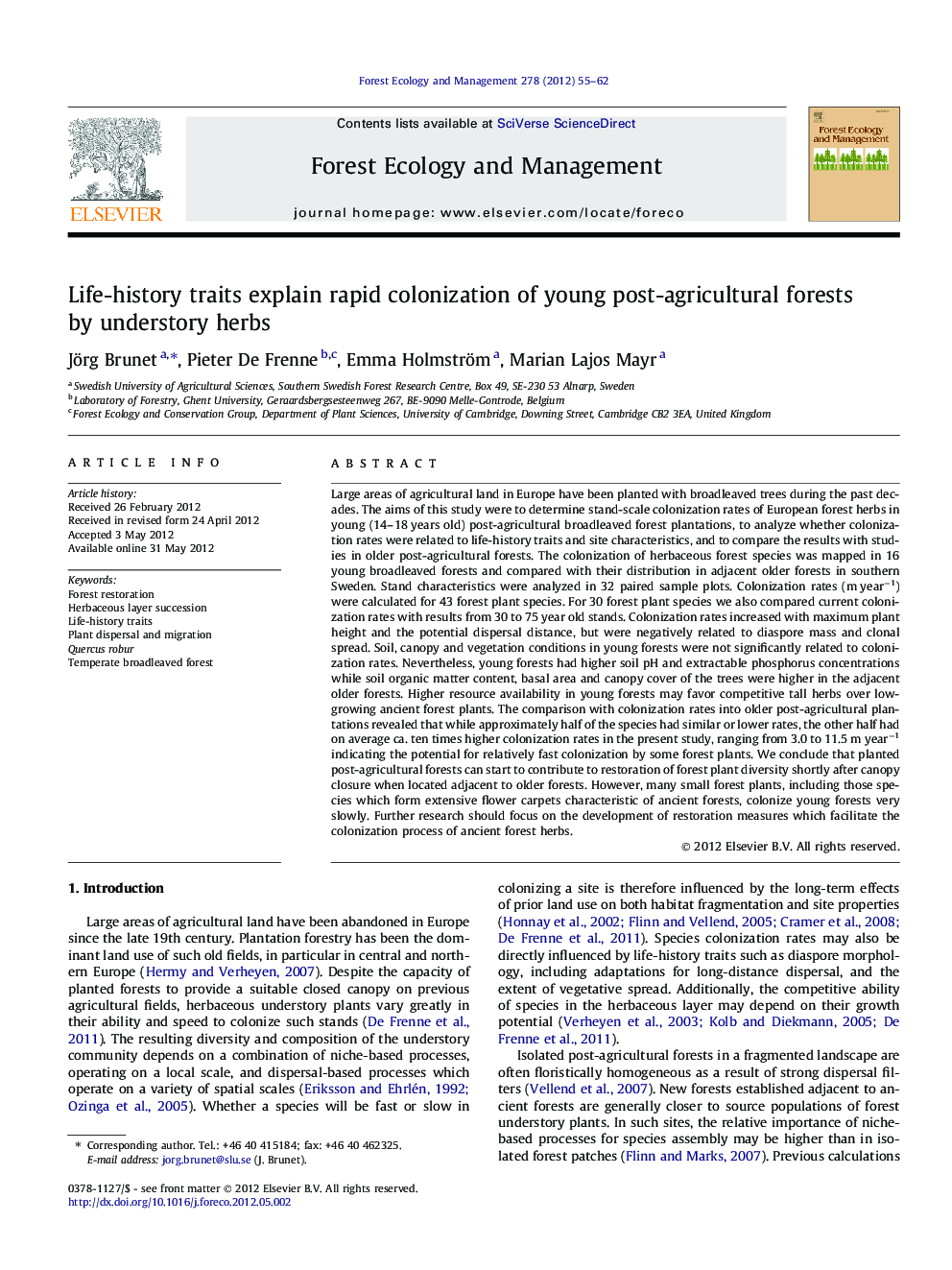| کد مقاله | کد نشریه | سال انتشار | مقاله انگلیسی | نسخه تمام متن |
|---|---|---|---|---|
| 87238 | 159240 | 2012 | 8 صفحه PDF | دانلود رایگان |

Large areas of agricultural land in Europe have been planted with broadleaved trees during the past decades. The aims of this study were to determine stand-scale colonization rates of European forest herbs in young (14–18 years old) post-agricultural broadleaved forest plantations, to analyze whether colonization rates were related to life-history traits and site characteristics, and to compare the results with studies in older post-agricultural forests. The colonization of herbaceous forest species was mapped in 16 young broadleaved forests and compared with their distribution in adjacent older forests in southern Sweden. Stand characteristics were analyzed in 32 paired sample plots. Colonization rates (m year−1) were calculated for 43 forest plant species. For 30 forest plant species we also compared current colonization rates with results from 30 to 75 year old stands. Colonization rates increased with maximum plant height and the potential dispersal distance, but were negatively related to diaspore mass and clonal spread. Soil, canopy and vegetation conditions in young forests were not significantly related to colonization rates. Nevertheless, young forests had higher soil pH and extractable phosphorus concentrations while soil organic matter content, basal area and canopy cover of the trees were higher in the adjacent older forests. Higher resource availability in young forests may favor competitive tall herbs over low-growing ancient forest plants. The comparison with colonization rates into older post-agricultural plantations revealed that while approximately half of the species had similar or lower rates, the other half had on average ca. ten times higher colonization rates in the present study, ranging from 3.0 to 11.5 m year−1 indicating the potential for relatively fast colonization by some forest plants. We conclude that planted post-agricultural forests can start to contribute to restoration of forest plant diversity shortly after canopy closure when located adjacent to older forests. However, many small forest plants, including those species which form extensive flower carpets characteristic of ancient forests, colonize young forests very slowly. Further research should focus on the development of restoration measures which facilitate the colonization process of ancient forest herbs.
► We studied stand-scale colonization of plants in young post-agricultural forests.
► Colonization rates were mainly related to plant height and seed dispersal types.
► Colonization rates of many species were 10–20 times higher than found in previous studies.
► Young forest plantations matter to conservation of acid-sensitive forest plants.
Journal: Forest Ecology and Management - Volume 278, 15 August 2012, Pages 55–62